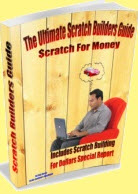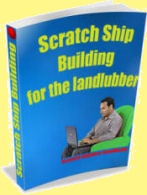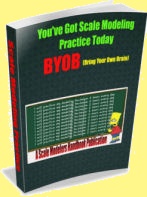First, you need some idea of where this project is going and when it is done. Speaking of when, your era is very important. For instance, if your model is a 19th century freight car and your era is the early 30s, you won’t find much graffiti.
To get an idea of real life railroad aging do a search on www.shorpy.com. you will get ideas for that natural look. Some are lot cleaner than you might have expected. Also check back issues of magazines like Trains, Railfan and Railways or Railroad Press for pictures if normally aged rolling stock. They can serve as a guide to what you want to accomplish.
Weathering rolling stock is done in degrees, sometimes only one or two layers, others can go as deep as five or six.
~ Stiff bristled paint brushes - nothing very large and keep the hairs short.
~ Tubes of acrylic paints (model paints will do, just be sure they are water based). White, Burnt Sienna, Burnt Umber, Raw Sienna, Raw Umber, and Ochre are good to start with.
~ Cardboard squares to use as paint palettes. 5" x 7", even smaller. Cut up cereal boxes work fine.
~ Bragdon’s Weathering Powders.
~ A soft bristled brush, similar to a make up brush. ** Isopropyl alcohol ** Shoe leather dye or India ink. .
~ Small bowls for water and alcohol to clean the brushes.
~ A roll of paper towels.
~ A spray can of Testors Dullcote, or a similar dull spray finish ** Q-Tips ** Pump bottle with a fine mist nozzle
.
~ Toothpicks and an old toothbrush.
Start by giving the car an overall coating. I prefer using acrylics for easy clean-up and control of the application process by brushing on various dilutions depending on the effect you want. There are obviously differing dilutions possible, but you want to thin the acrylic down to the the density of kool-aid.
When using a wash for weathering, it should be either a darker hue of your base color or a dark gray or possibly even a black color, (depending on your base color). The trick is to keep from making the contrast between your wash and basecoat too great, (to keep it from looking artificial).
Let your wash dry and you have removed any excess, you need to dull it down with a coat of dullcote or clear flat.
Side Streaking
No, this does not involve removing your shorts. You are recreating stains of rust or other materials running down the sides of your freight cars. You can create these by brushing on Bragdon Powders.
Use a soft-bristled brush, even your fingers to simulate the streaking effect. Remember, these streaks broaden as they reach the bottom. This carries over to painted lettering on cars that had a tendency to chalk as it aged which also washed down the sides of the car. Use a powder close to the lettering’s color.
Adding Weathering Detail
Add depth by flooding a water-based grimy black wash into open roof walks, reefer hatches and behind brake wheels and ladders. A little goes a long way.
Airborne deposits from both steam and diesel exhausts tend to darken rooftops, cause splash-over dark areas along the leading edges of cars . Don’t forget to darken with wash liquid vertical streaks to simulate splash-up from wheels of the car ahead.
As cars age you will find the reds and blues fade the fastest which varies by degree depending on the areas where it has operated. No two cars are alike. That is why, when you finish your weathering, you may want to consider an over wash of thinned out body color.
The powders can help you recover from blunders by softening garish colors and adding highlights to dull areas. I often use my stubble brush which is simply a round paint brush trimmed to a 1/16th –inch length to dab on spots of rust powders using them all, light, medium and dark rust. Add soot powder and spread it.
I believe the powders are going to become my “go-to” weathering technique. They bring out various shades and colors, tend to even the effects of aging and adhere well to a surface because of the mixed-in pressure sensitive, dry adhesive.










